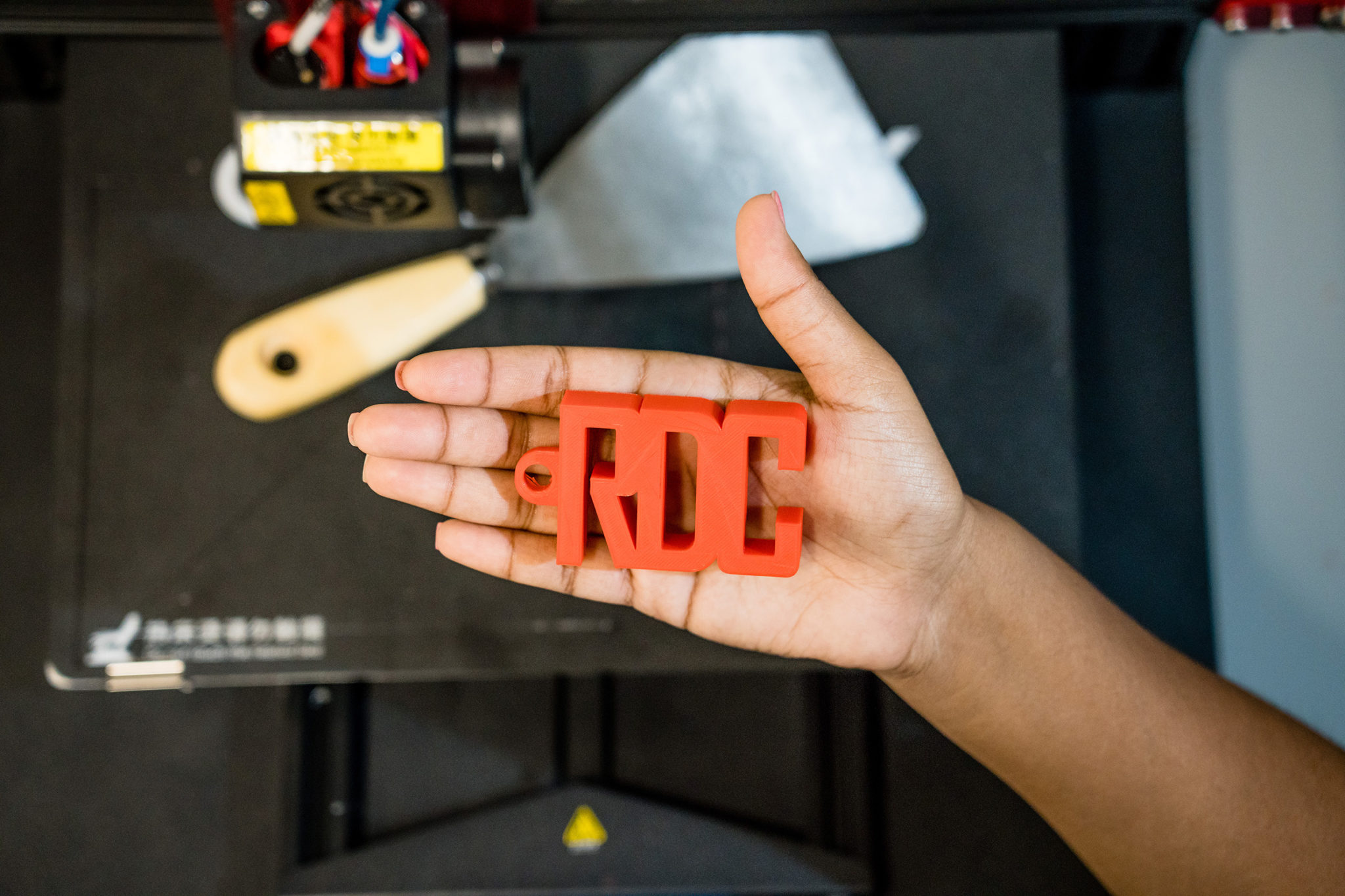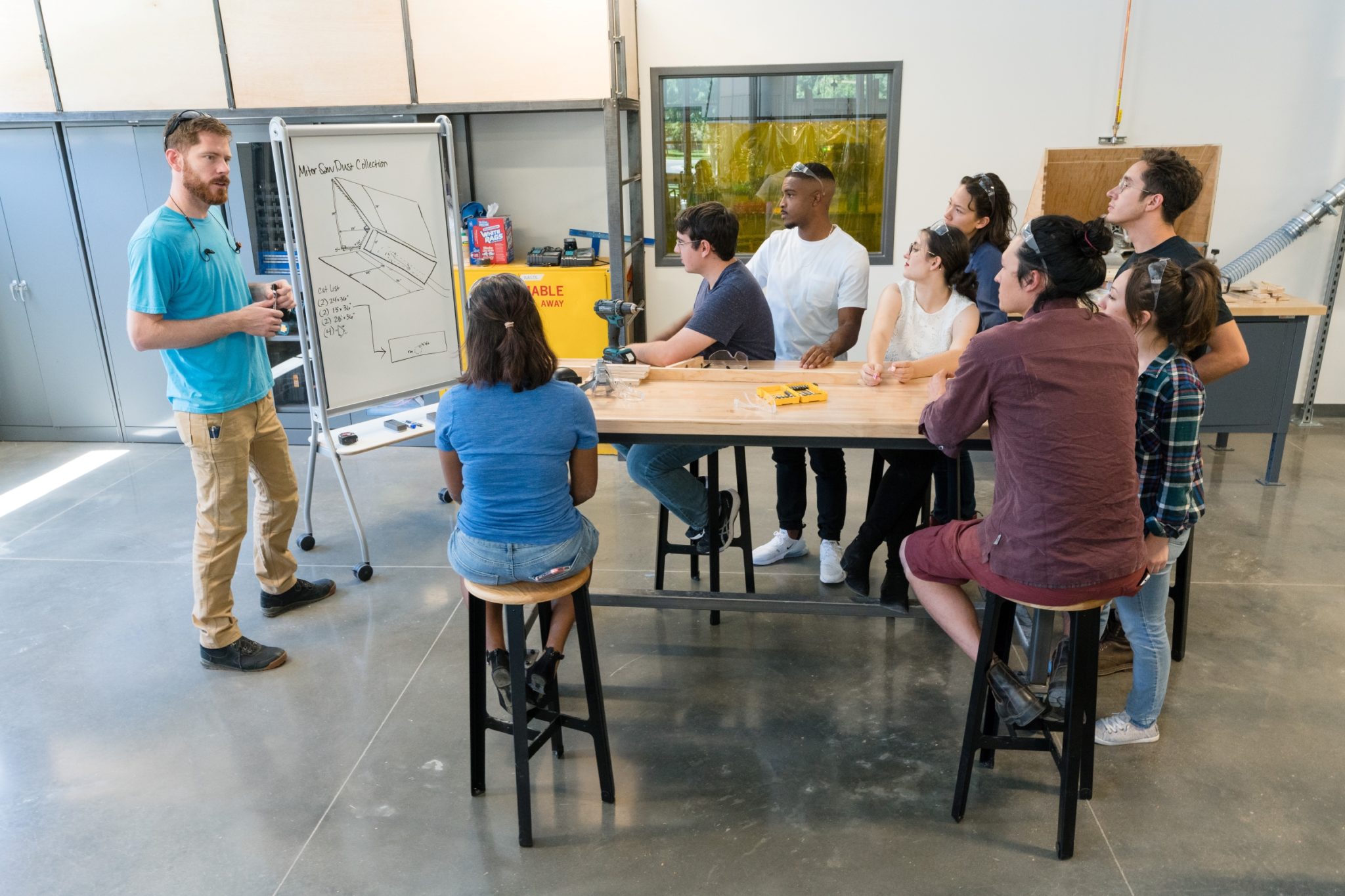
by Justin England and Emma Stark
With the recent expansion of Colorado State University’s dual enrollment offerings, high school students across Colorado now have more opportunities to explore unique interests, design their future, and earn college credit before graduation. As part of a collaborative, interdepartmental effort between CSU Online, CSU Extended Campus, and the CSU College of Business, the Nancy Richardson Design Center offers workshops and design thinking courses that are proactive, accessible, and low-risk opportunities for high school students to prototype their ambitions before jumping head-first into the college experience.
Since 2019, CSU’s Nancy Richardson Design Center has assembled a diverse learning community that is open to anyone from any background, discipline, or age group. Creators, researchers, engineers, and entrepreneurs engage in the RDC’s collaborative space with cutting-edge technology and with students to tackle real-world problems through the design thinking process. Dual enrollment offerings at the RDC go far beyond the opportunity to get a head start in college. High school students in approved districts across the state can harness highly marketable skillsets to strengthen personal interests or career goals.
Learning and earning growth
Design thinking is a human-centered process that emphasizes empathy, experimentation, and iterative prototyping to solve complex problems. According to Harvard Business School, companies requiring design thinking skills have increased by 637% since 2017, and demonstrating these skills can translate into a 24% increase in median annual salary. Not at all limited to the design industry, there is a significant increase in popularity and demand for design thinking credentials in today’s highly competitive job market. With a growing call for user-centered problem-solving skills throughout all fields of study, the RDC is quickly emerging as a leading facility for interdisciplinary collaboration and innovative education.

Over the last two years, an expanding network of K-12 school districts benefited from over 30 different CSU dual enrollment course offerings, with design thinking being among the most sought-after experiences. Indeed, the Nancy Richardson Design Center taught 67 out of the 144 students participating in CSU dual enrollment programs during Fall 2022 semester. Courses like IDEA 110: Designing Your Life with Social Impact have quickly become valuable tools for students of all ages to create and explore pathways through college and beyond. In this introspective course, students learn how to apply tools from design thinking and behavioral sciences to develop goals and priorities, design meaningful life experiences, and foster resilience strategies. As part of CSU’s campus-wide initiative to expand dual enrollment opportunities, IDEA 110 will also become a 3-credit Guaranteed Transfer (GT) course and will count towards CSU’s All-University Core Curriculum (AUCC) beginning in Fall 2023.
Hope Parker, CSU Instructor of Design Thinking and Dual Enrollment Coordinator at the Nancy Richardson Design Center and the College of Business, is excited about the benefits both high school and university students will gain from the course. “IDEA 110 is a unique course because it allows students to get AUCC college credit while learning to design their pathway as a person,” Parker explained. “This is an awesome opportunity for a person at any age—but especially as a high school student. It is the perfect course to test and try things out while you begin to understand who you are and what you want for your future.”
A Game Changer for Goal Attainment
IDEA 210: Introduction to Design Thinking is another popular dual enrollment opportunity at the RDC, allowing high school students to learn how to become workforce innovators. Participants are encouraged to explore unique interests by choosing the focus of their coursework in a highly collaborative, project-based learning environment. Previously, students have tackled a wide variety of modern-day problems including advanced manufacturing, innovation in sustainability, and robotics, to name just a few.

Beau Townsend, an instructor at The Innovation Center of St. Vrain Valley Schools, has first-hand experience witnessing the impact Design Thinking dual enrollment courses have had on a new generation of scholars. During the course, Townsend’s students explored a variety of topics including aeronautics, robotics, studio production, biosciences, and virtual reality. Townsend notes that IDEA 210 provided an eye-opening experience for his class by introducing and strengthening skills required for self-sufficiency at the university level. He explained, “The Design Thinking process is a priority for our students. IDEA 210 took my students through a journey of using design thinking further in depth. The course gave the opportunity for students to work in groups. These particular students haven’t done much work in groups because of the [COVID-19] pandemic. IDEA 210 gave them the opportunity to collaborate and present to an audience which was a new experience for many.”
Chris Blevens with Compass Community Collaborative School also received positive feedback from his students enrolled IDEA 210. According to Blevens, many were surprised at how approachable and widely applicable design thinking coursework can be. Students were engaged, highly curious, exercised their ability to work in group settings, and were committed to deadlines. “I really appreciate the amount of student choice that IDEA 210 offers,” Blevens explained. “This makes it possible to incorporate additional high school objectives during the course. For instance, I am able to assess specific skills in scientific literacy, technical agility, and systems thinking all while the students are completing their work for their CSU class.”
Engaging with Design Thinking
As professional and academic landscapes continue to grow and change in new ways, the Nancy Richardson Design Center at Colorado State University is committed to providing flexible opportunities for high school students across Colorado to bolster their learning and prepare for college or career. High school students, educators, and administrators interested in learning more about the benefits of RDC dual enrollment courses and workshops should contact the Nancy Richardson Design Center at design@colostate.edu.